Sibu and Mukah are among Sarawak’s lesser-known destinations, full of cultural adventure and unexpected discoveries, especially for first-time visitors.
In the second instalment of a two-part Borneo series, The Bruneian, together with local media representatives and travel agents, travelled into central Sarawak, uncovering the rich cultural tapestry of the Melanau people in Mukah and the historical charm of Sibu.
Mukah: the Melanau Heartland
Mukah is a coastal town offering a unique blend of natural beauty and rich cultural experiences.
Known as ‘the Melanau Heartland’, it is the ideal destination to explore and immerse yourself in the heritage of one of Sarawak’s oldest indigenous groups.
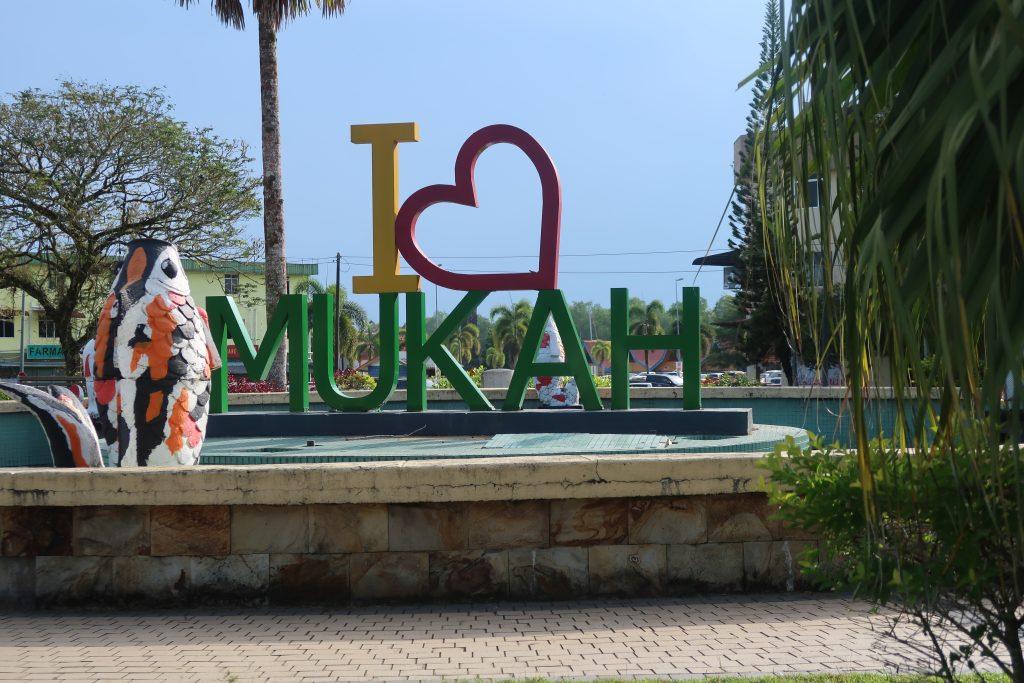
From culinary treasures to prominent festivals like ‘Pesta Kau’ , Mukah offers a rare glimpse into the authentic lifestyle of the Melanau people.

Our first stop was the quaint town of Oya, where we had the opportunity to learn about the making of a hands-on session making their signature Kuih Sepit .
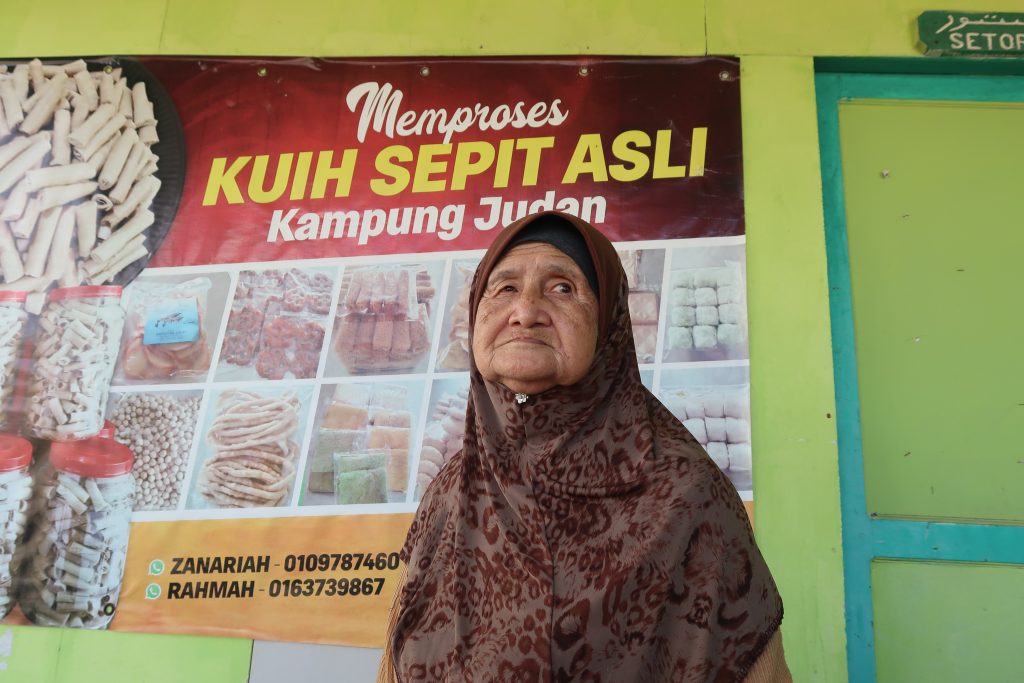
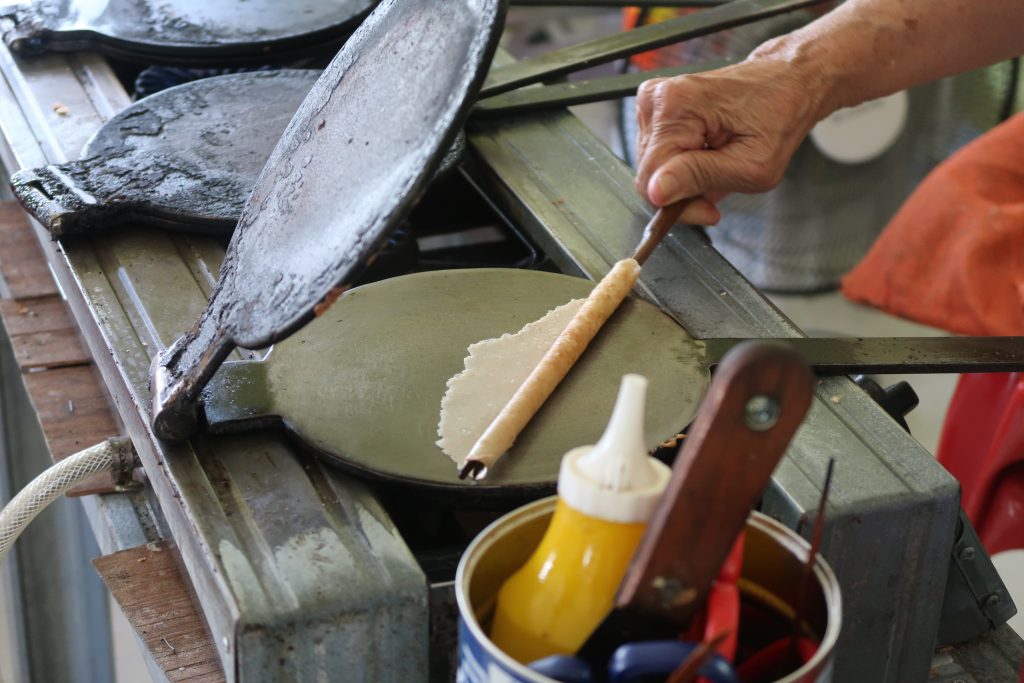
The traditional Sarawakian biscuit is widely popular in Kampung Judan in Oya not just for its distinctive taste, but also for the traditional craftsmanship behind it. Each piece is carefully folded and toasted over a charcoal fire, a process that reflects a heritage passed down through generations.
Next, we visited the Melanau Oya Heritage Gallery, a cultural hub that marks a proud milestone for the small town of Oya. The gallery stands as a symbol of pride for the Melanau people, dedicated to preserving and showcasing their rich cultural heritage.
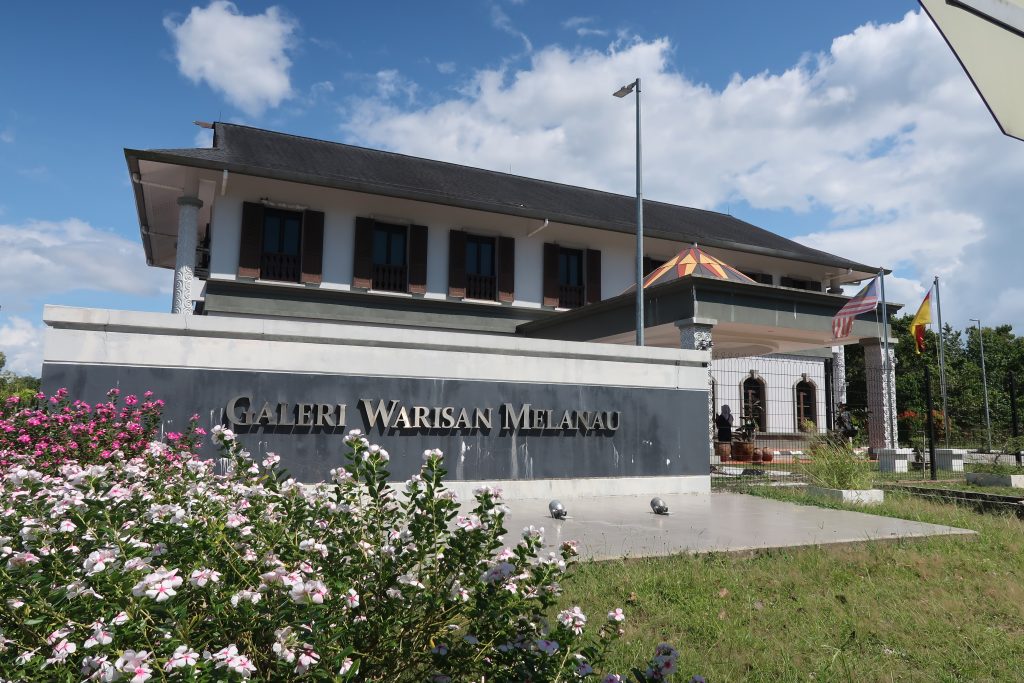
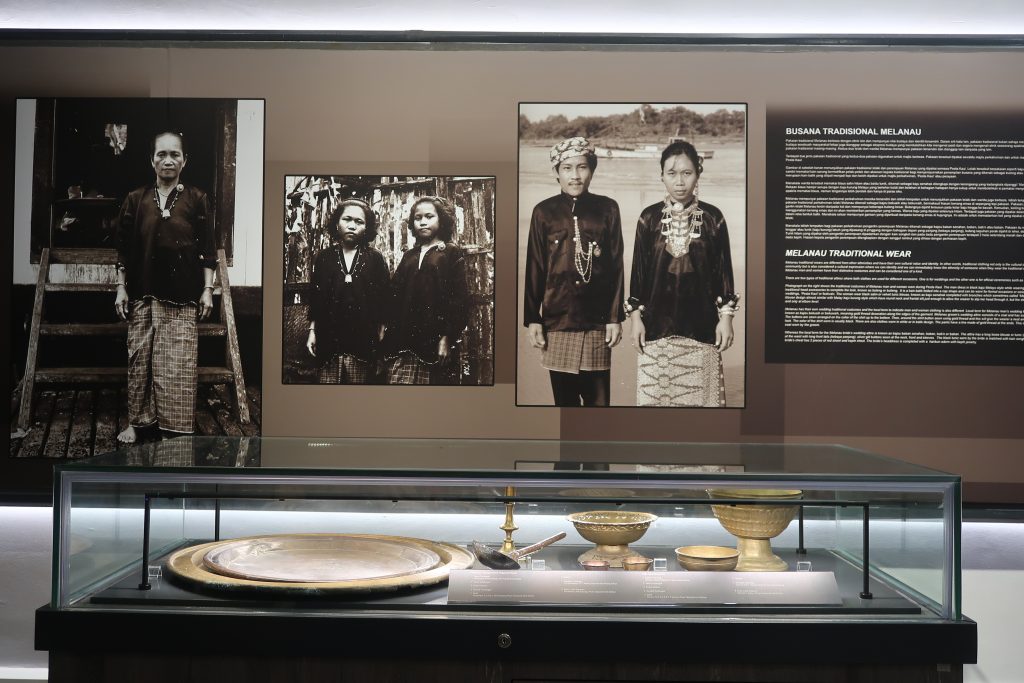
Inside, the gallery’s two main sections showcase the Melanau community in Oya, tracing their journey from seafaring roots to their role in modern Malaysia through immersive displays and artifacts.
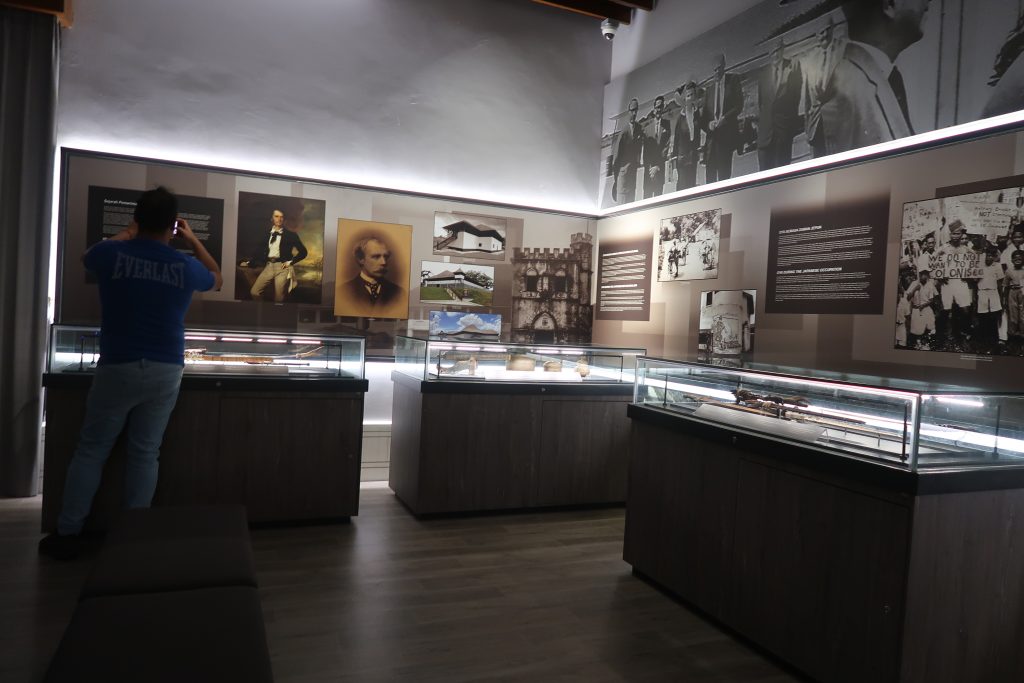
Opened in 2022, the gallery serves as a reference centre for younger generations and a cultural gateway for local and international visitors, offering insights into the origins and traditions of the Melanau community
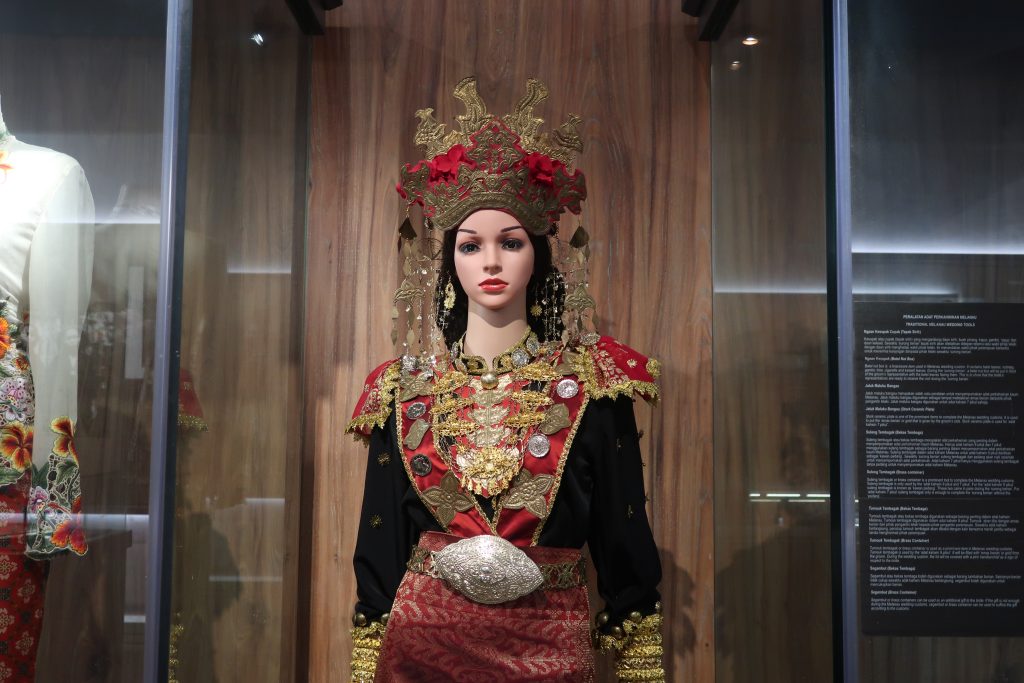
Today, the gallery serves not only as a cultural archive but also as a living reminder of the resilience and vibrancy of the Melanau people, helping to ensure their stories are passed down and appreciated for generations to come.
Further into our tour, we had the opportunity to shop the town’s famous fish and prawn crackers.
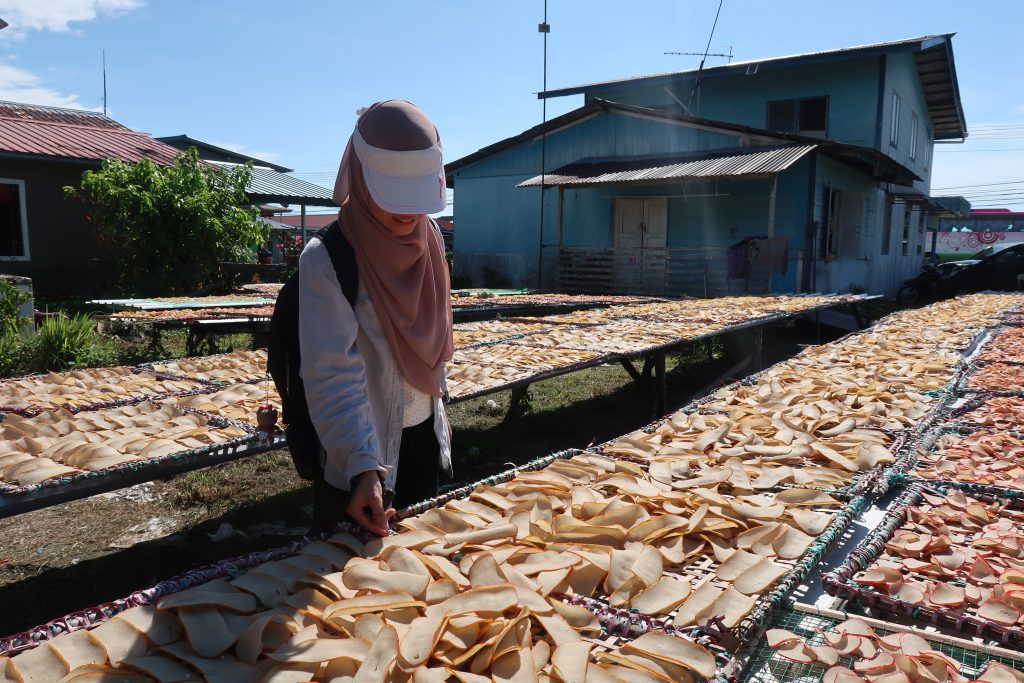
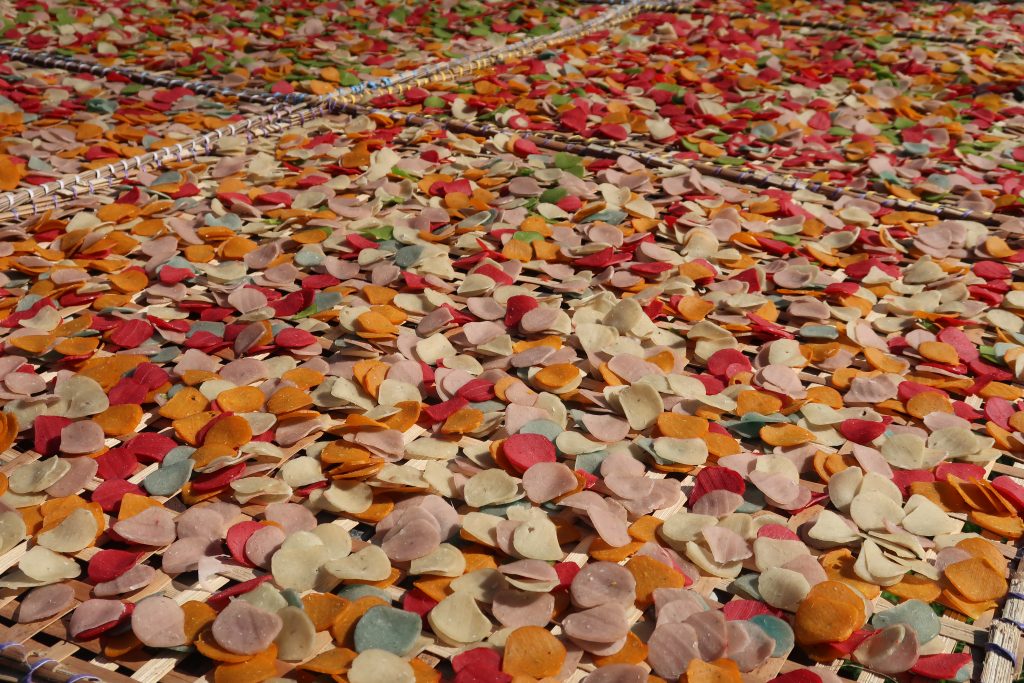
Laid out beautifully under the sun are rows of colourful crackers. Sun-drying is an age-old method in Mukah that preserves the flavour of fresh seafood and reflects the community’s coastal roots.
Journey through Kampung Tellian
Nestled along the quiet riverbanks of Mukah, Kampung Tellian stands as a living museum of Melanau heritage.
Kampung Tellian offers visitors a rare glimpse into the cultural heritage of one of Borneo’s oldest ethnic groups. Known for its stilt houses and rich traditions, the village is home to the Lamin Dana Cultural Lodge, a cultural centre that promotes immersive experiences in Melanau lifestyle
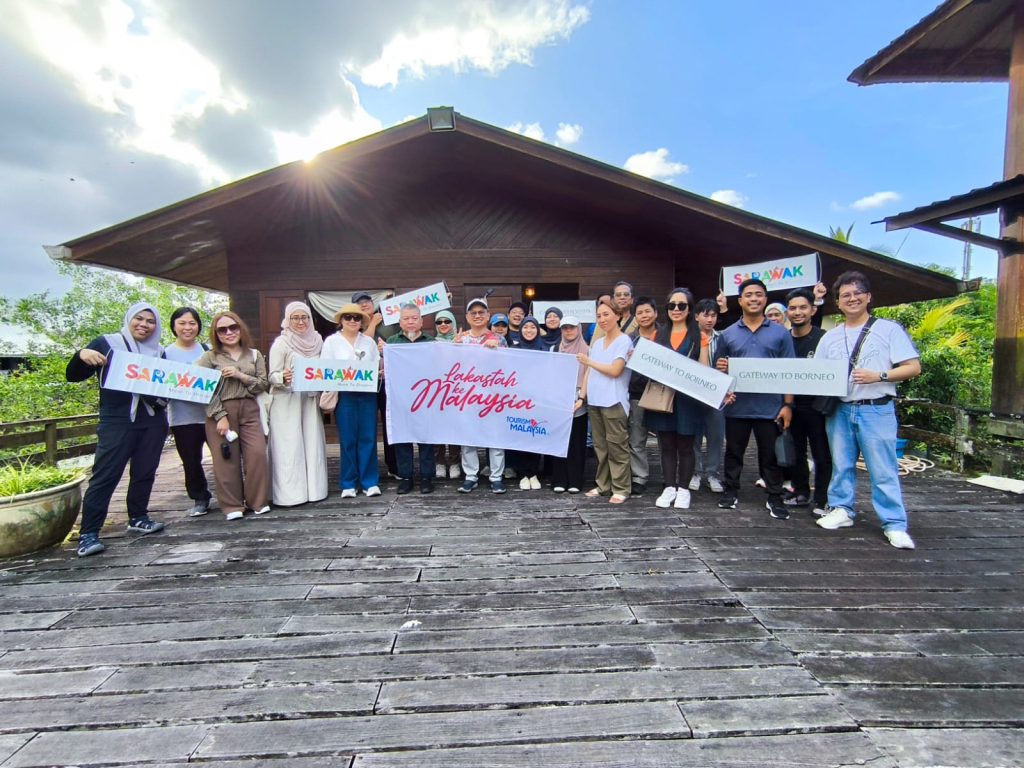
During our visit, we took a guided walk through the village, where every step revealed stories of tradition, daily life, and the enduring spirit of the Melanau community.
One of the highlights of the tour was the iconic Jerunai, an ancient, intricately carved burial pole that was traditionally used in Melanau aristocratic funerals.
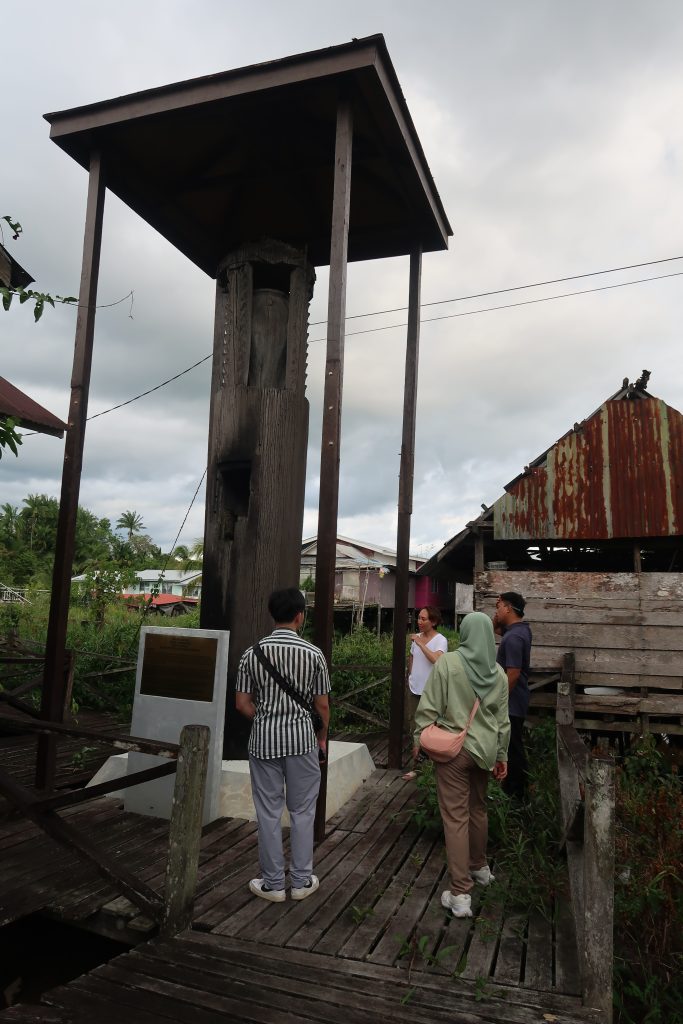
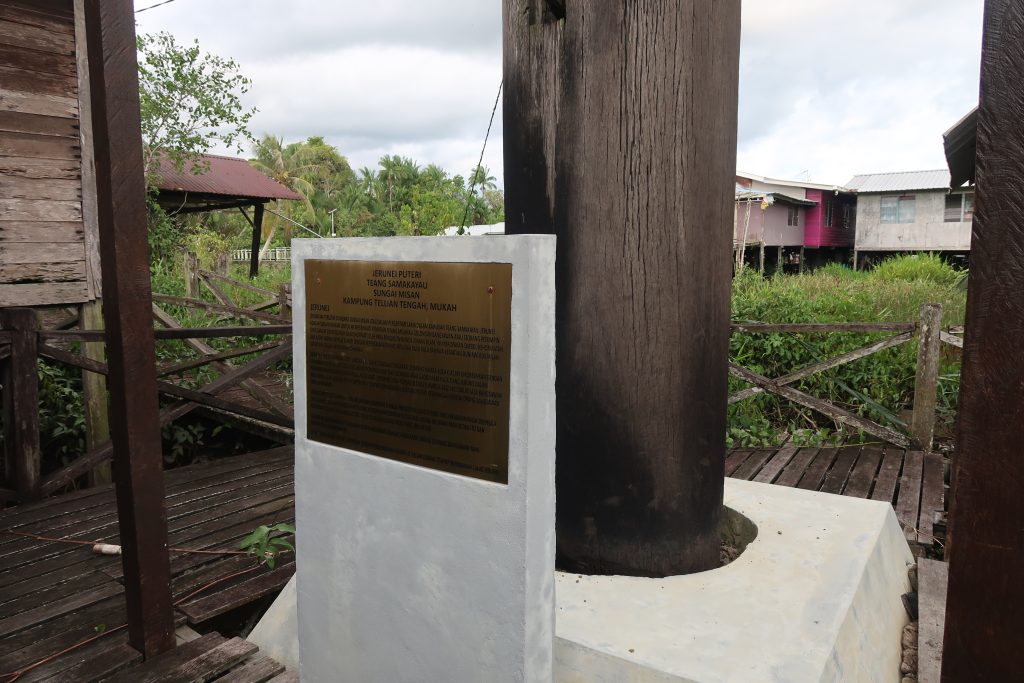
Each pole is carefully crafted from ‘Belian’ or ironwood, a strong timber that can endure heat and heavy rain for centuries. The Jerunai is adorned with unique carvings and symbols that reflect the Melanau’s ancestral heritage, rituals surrounding death and the afterlife, and the status of the departed within their society.
Next, we visited Sapan Puloh, a Melanau cultural heritage museum founded by Tommy Black.
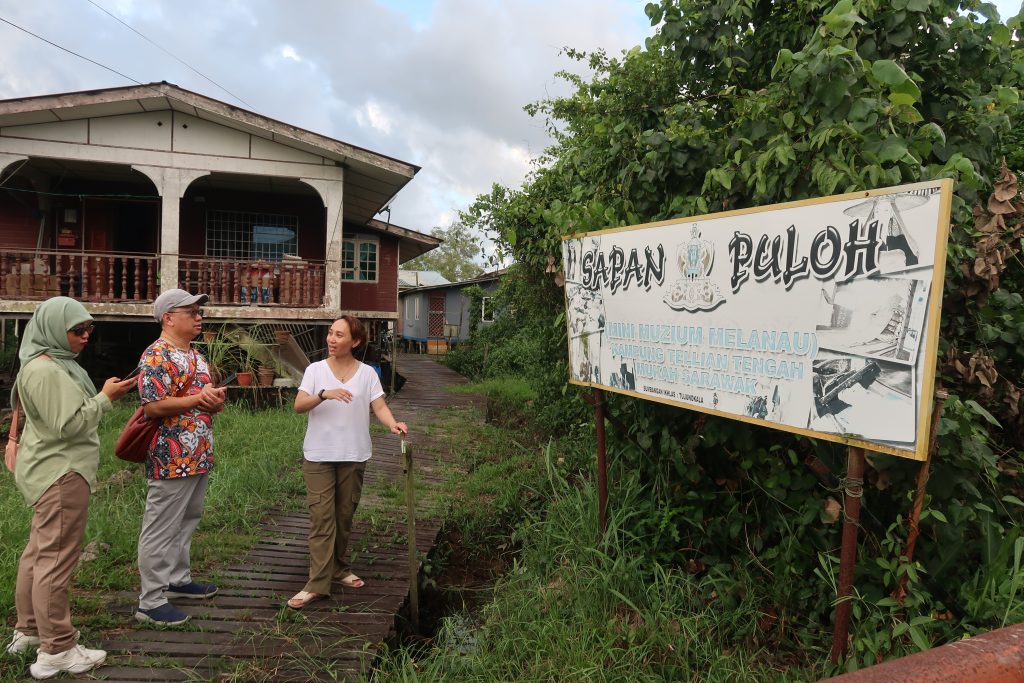
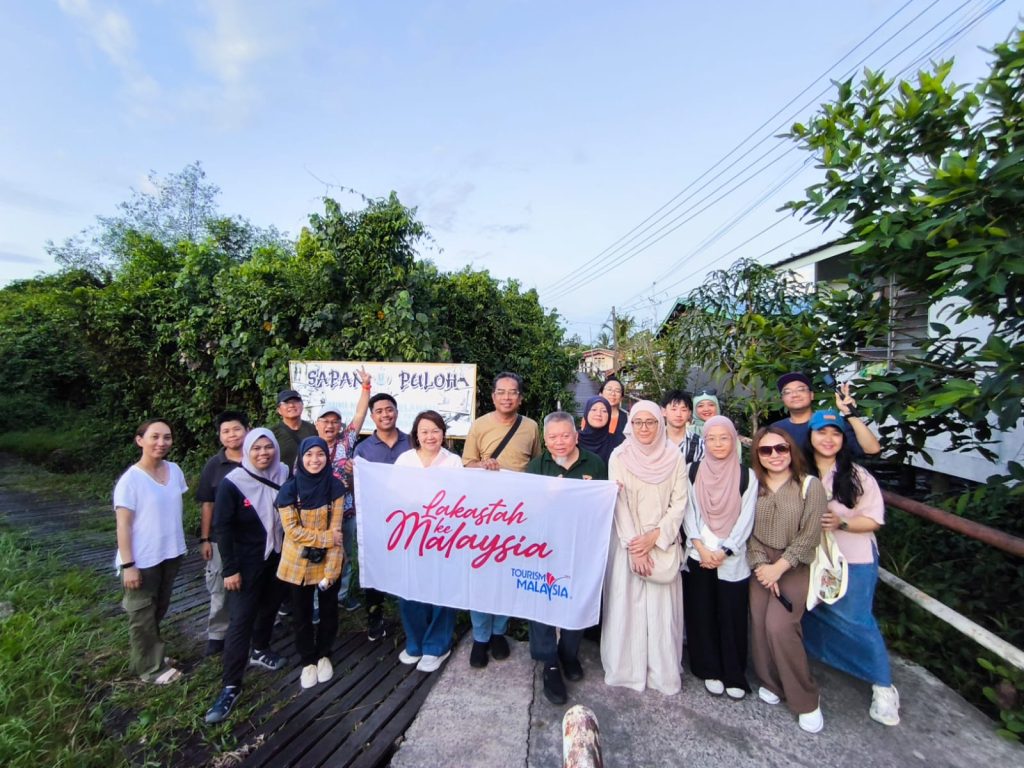
The mini private museum is filled with rich stories and offers a unique journey into the traditions and history of the Melanau people.
The owner, Tommy, has dedicated his life to preserving and promoting the rich cultural legacy of the Melanau people. Many of the items on display come from his private family collection, some of which are more than a century old
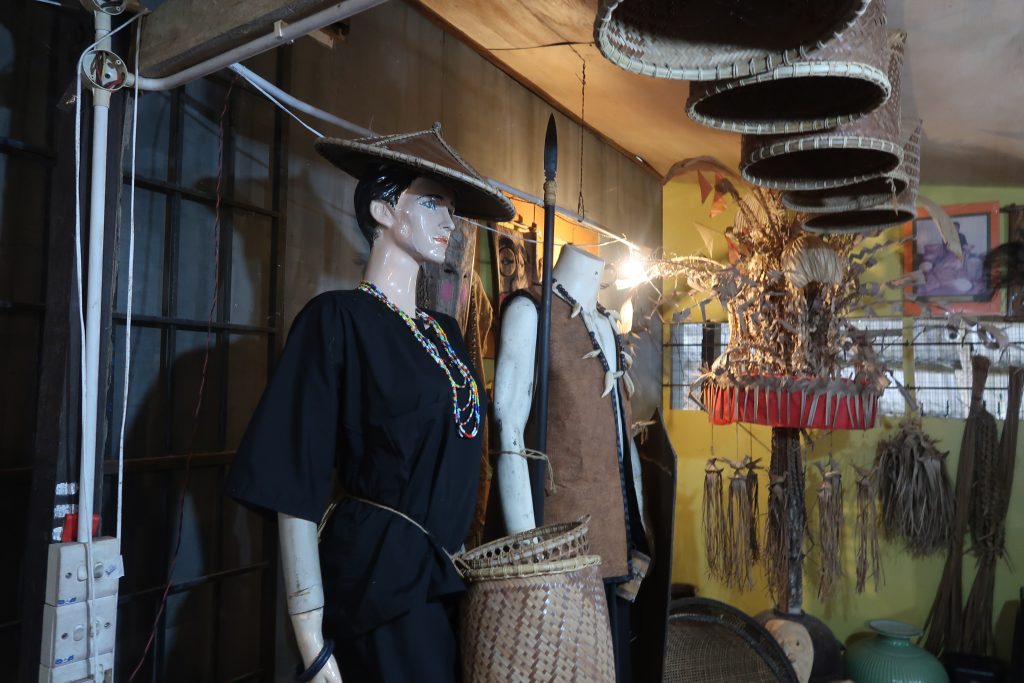
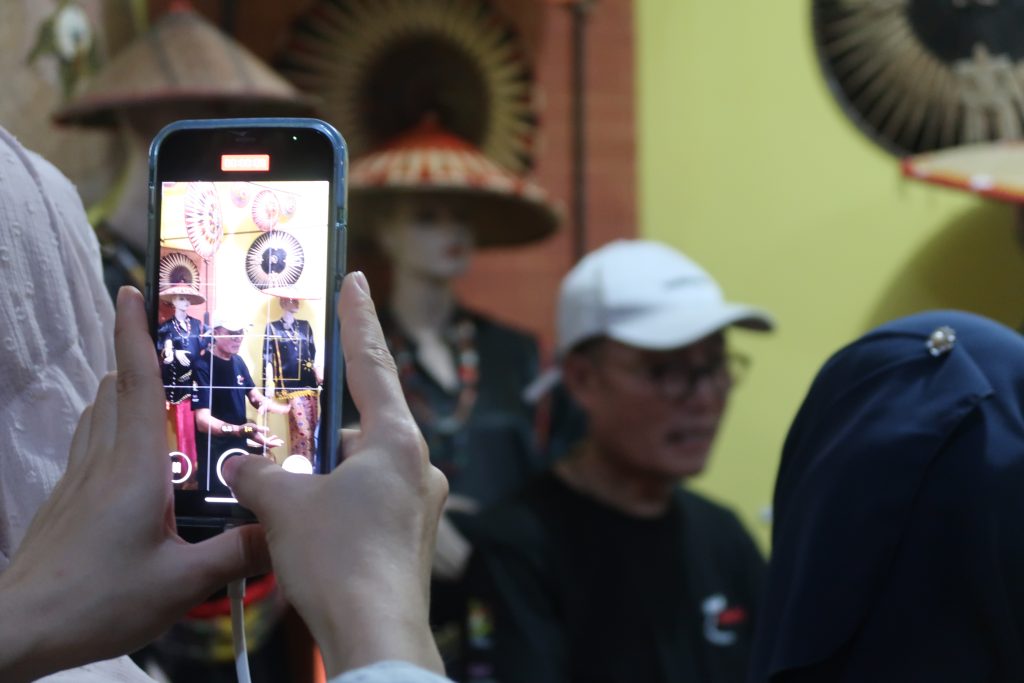
Tommy brings the visit to life with his engaging storytelling, making the experience truly captivating. Through his stories, we also discovered the historical ties between Mukah and Brunei, from the Melanau aristocratic lineage to their long-standing trade connections.
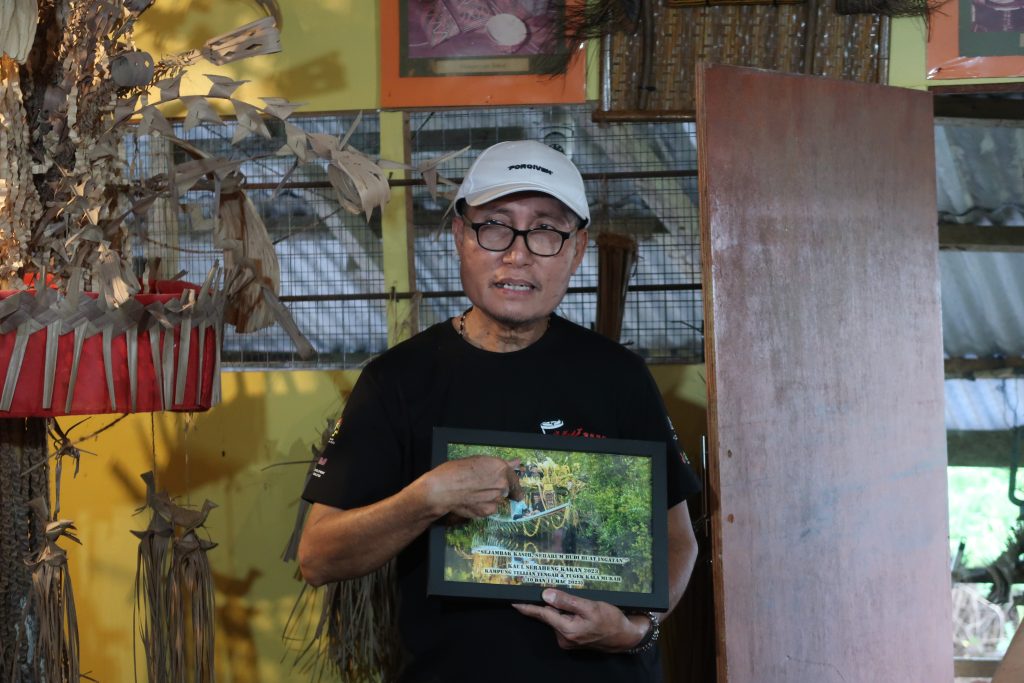
Back at the Lamin Dana Cultural Lodge, we watched a demonstration of Tedebeh, also called Tumpik. A beloved Melanau snack made from sago flour, grated coconut, and a hint of salt, it is pressed onto a hot pan or banana leaf until crisp, then served with sambal or dried fish.
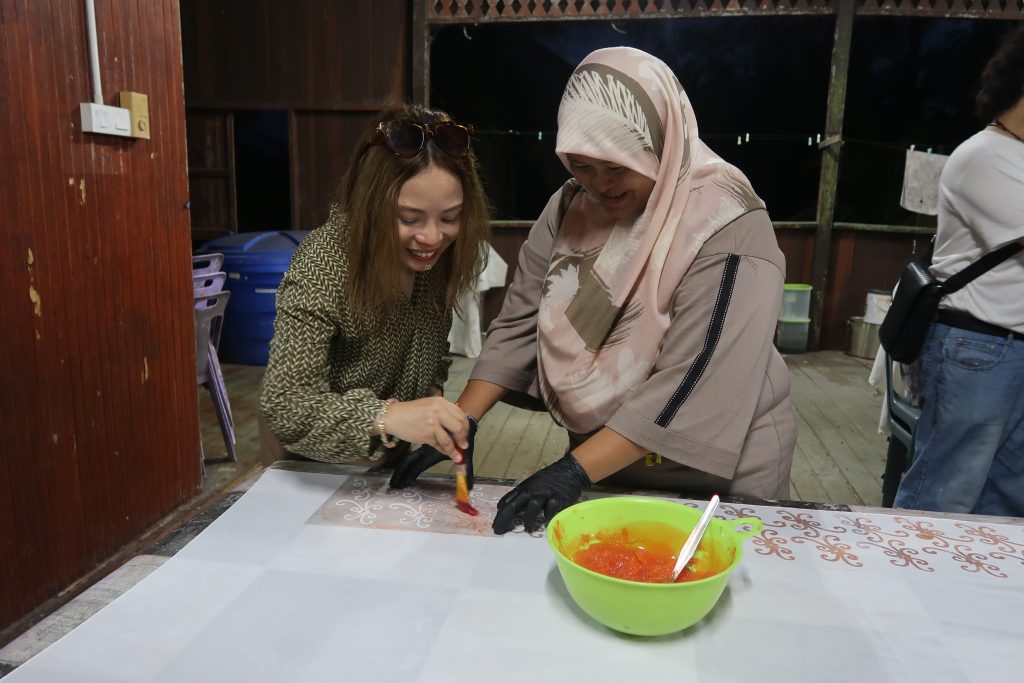
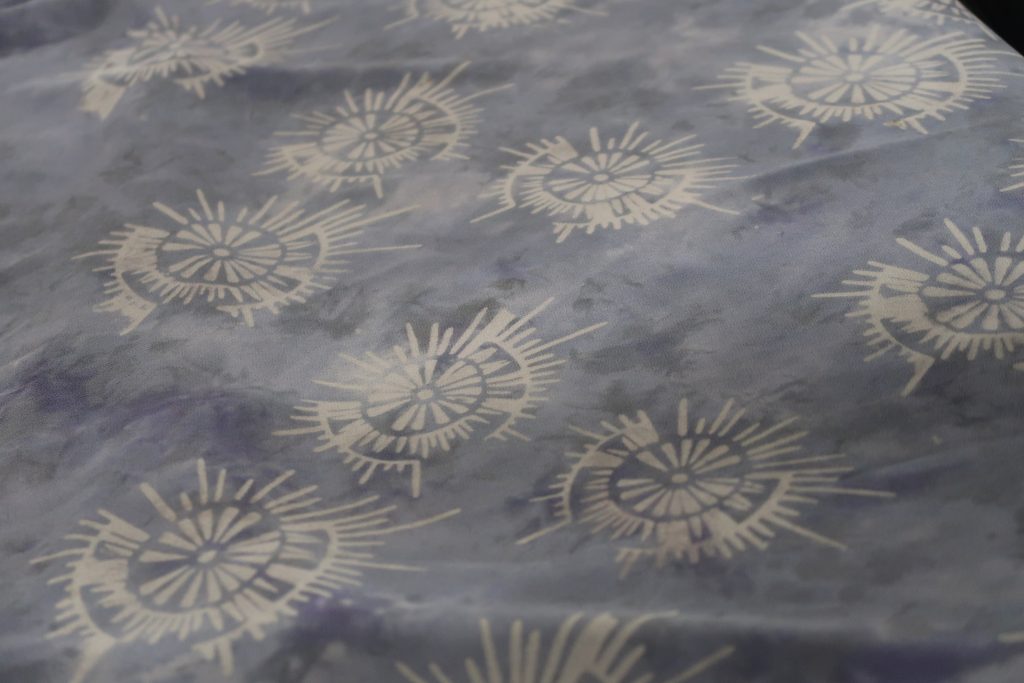
Further into our day, we also had the chance to witness the making of Batik Linut, a creative fusion of the traditional batik art with a Melanau twist.

Using linut, a sticky sago starch, instead of candle wax, we painted patterns on to the fabric. The unique and innovative method was created by Diana Rose, who is also the founder of Batik Linut and the owner of the Lamin Dana Cultural Lodge.
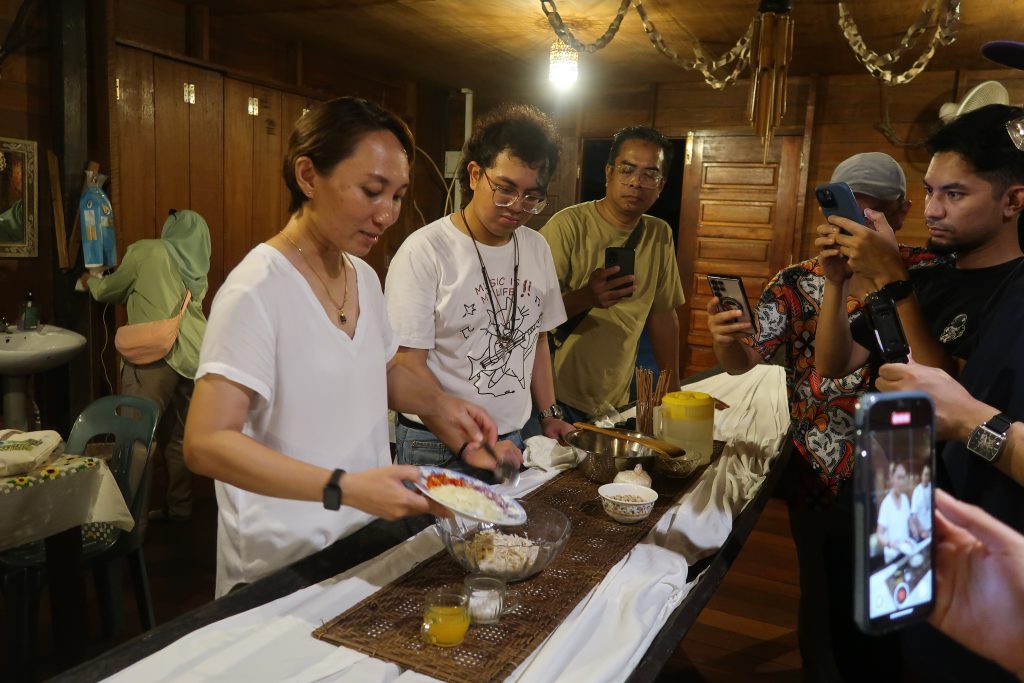
At the end of the day, we enjoyed a feast of traditional Melanau dishes. One of the culinary highlights was a live demonstration of Umai, a tangy raw fish salad marinated in lime juice, chilies, and onions.
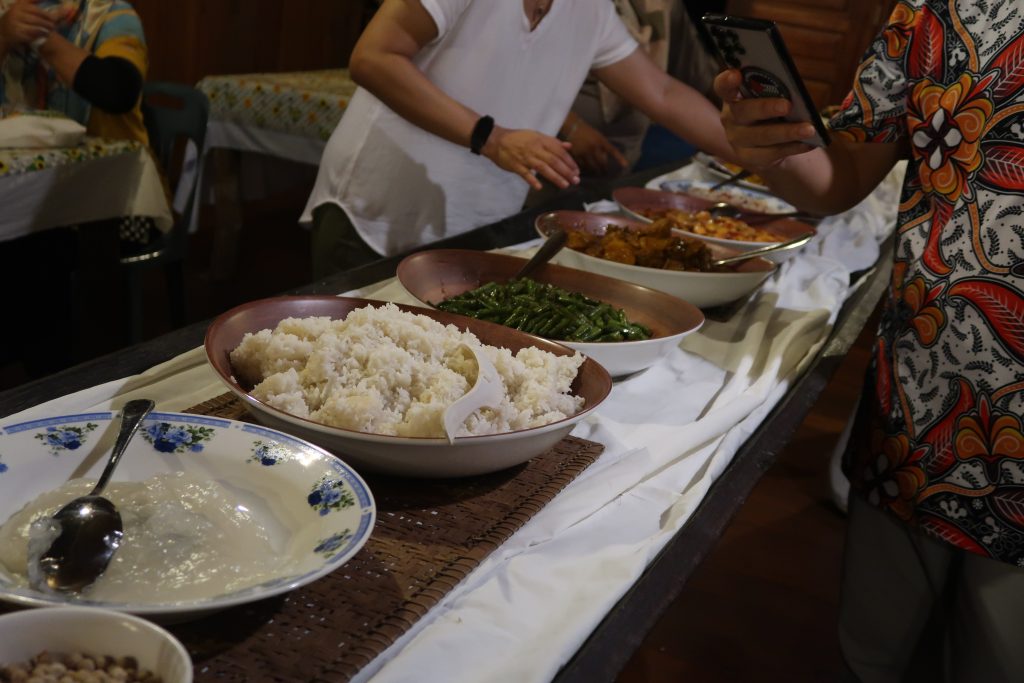
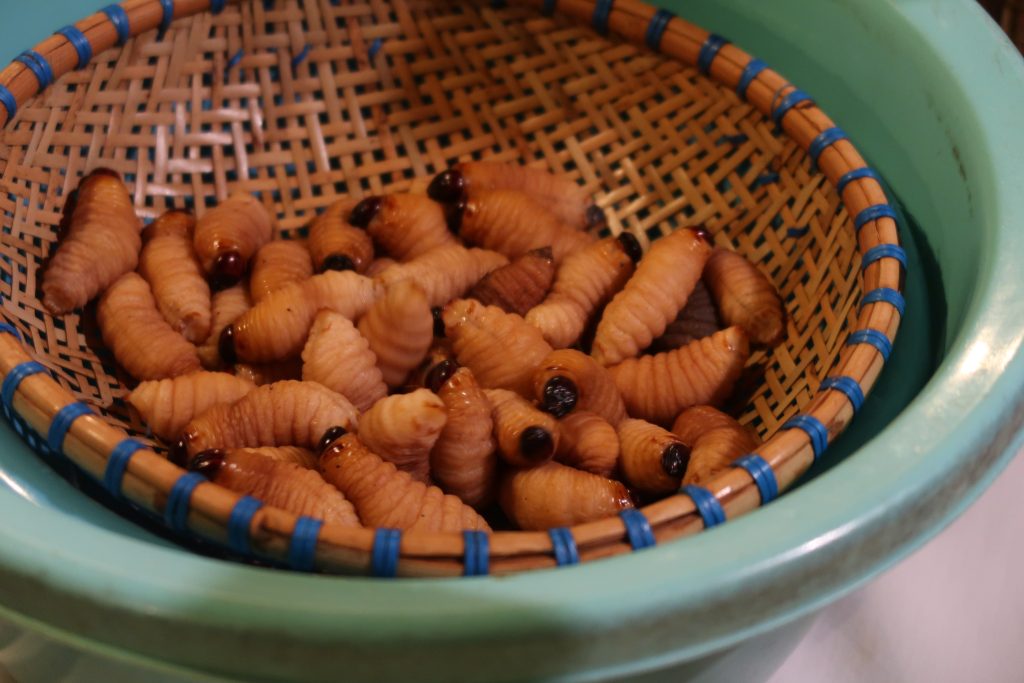
For the more adventurous, we even dared to try ‘ulat mulong’, or sago worms, a prized Melanau delicacy often fried and served with sago pellets.
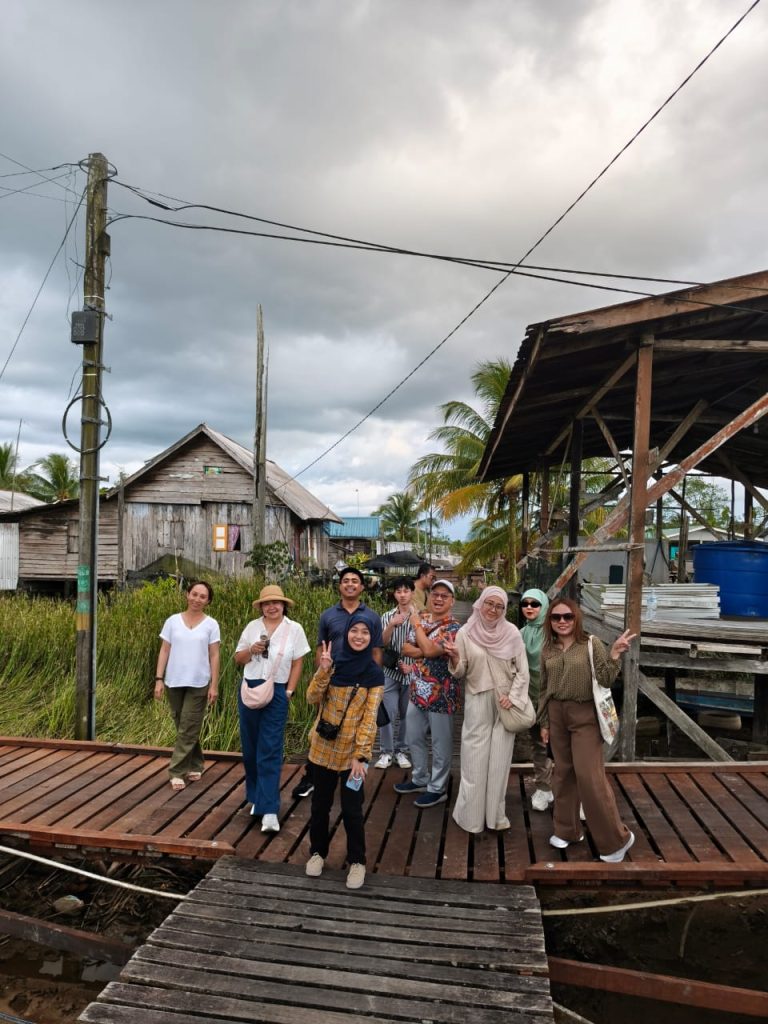
All in all, Kampung Tellian is more than just a destination — it is a living archive, where history is not sealed behind glass but flows through every meal we ate, every story shared, and every tradition kept alive by its people.
Sibu: the charming heart of Sarawak
Often overlooked in favor of Sarawak’s more popular destinations, Sibu stands out as a vibrant riverine town celebrated for its unique blend of cultural heritage, rich natural beauty, and historical significance.
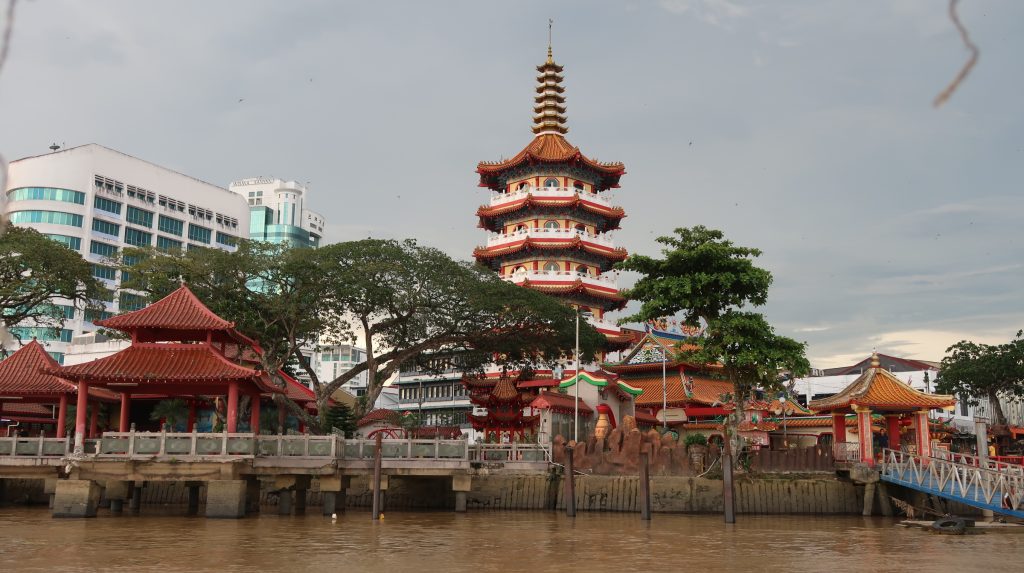
This charming city weaves together a rich tapestry of culture, history, and tradition, painting a vivid portrait of Sarawak’s diverse heritage.
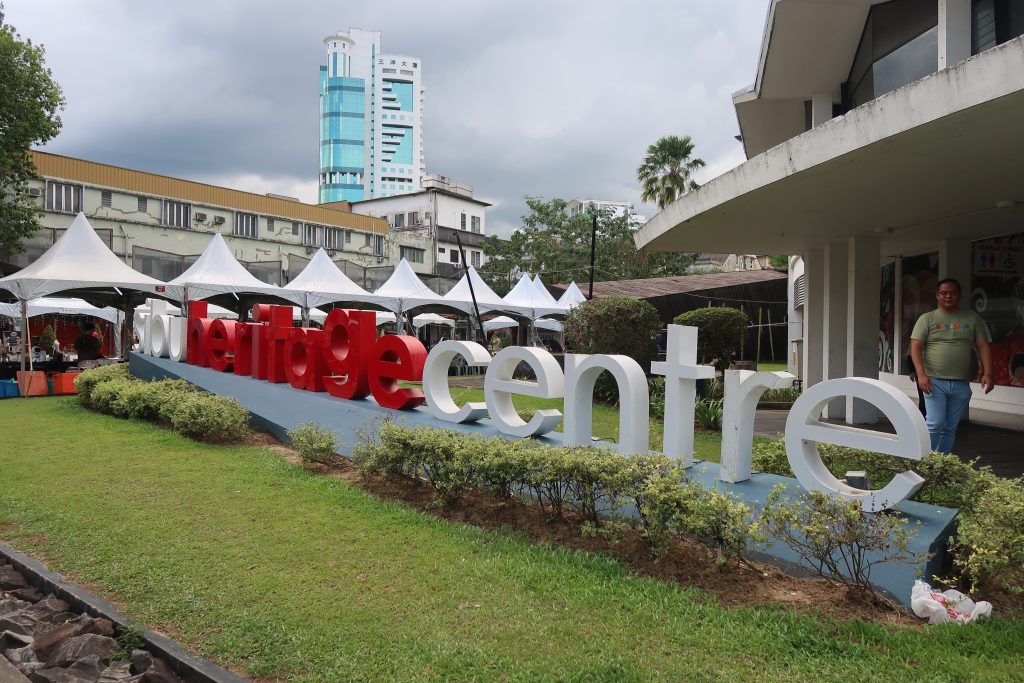
Our first stop is the Sibu Heritage Centre, a must-visit museum nestled at the heart of this heritage. It offers an intimate glimpse into the town’s diverse communities and their stories, from early Chinese settlers to indigenous groups.
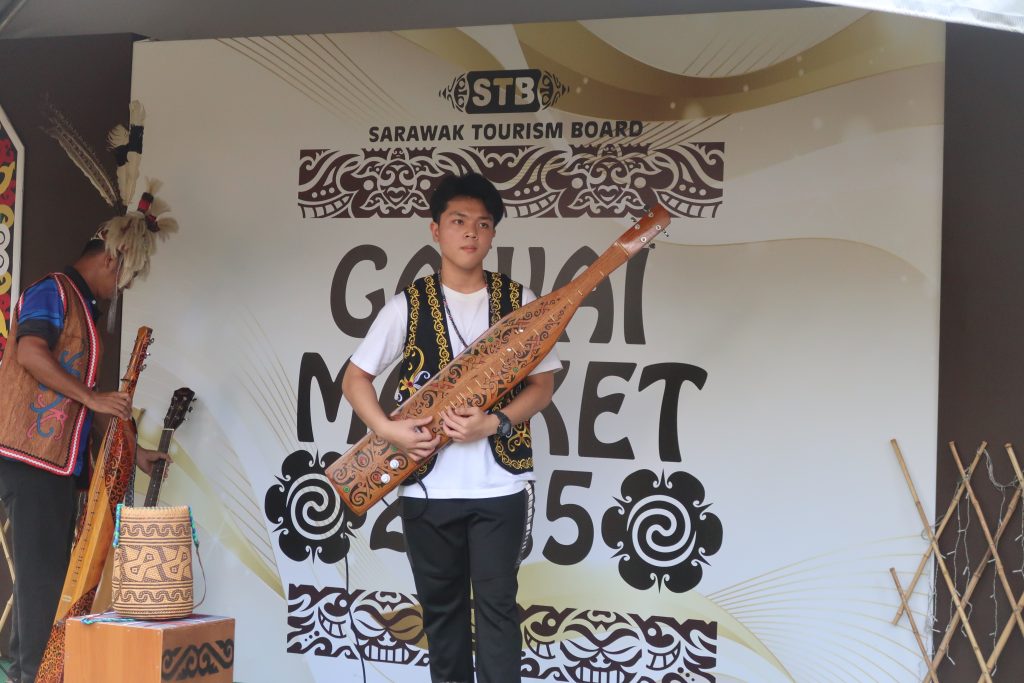
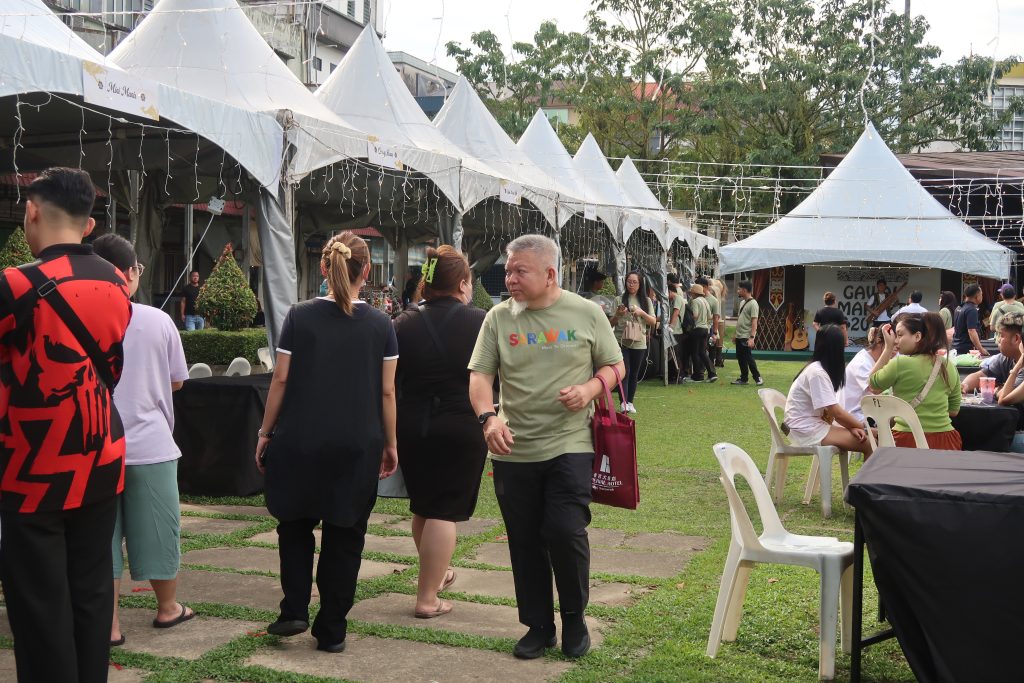
For those seeking an authentic cultural experience, the Heritage Centre serves as the perfect starting point to discover the soul of Sibu.
Further into the day, we had the chance to visit Masjid Al-Qadim, one of the oldest mosques in the region.
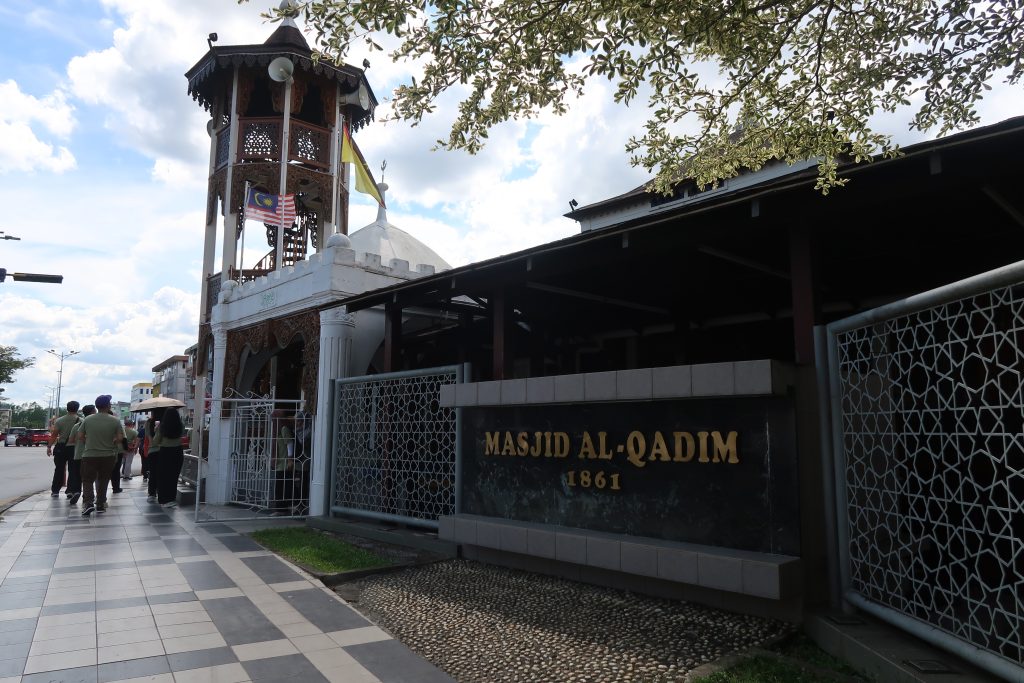
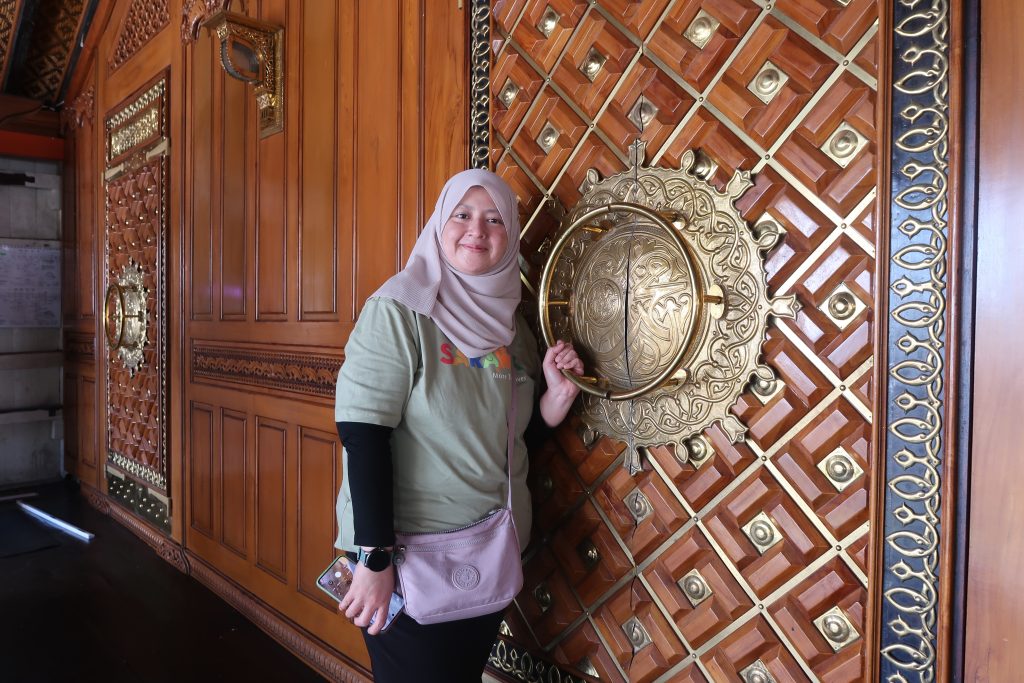
With its distinctive architecture, the mosque blends Islamic motifs with local design elements, creating a serene spiritual space that has long served as a cornerstone of the community.

Built in the early 19th century, Masjid Al-Qadim stands as a testament to the early Muslim communities who settled in Sibu and played a crucial role in shaping the town’s cultural and spiritual landscape.
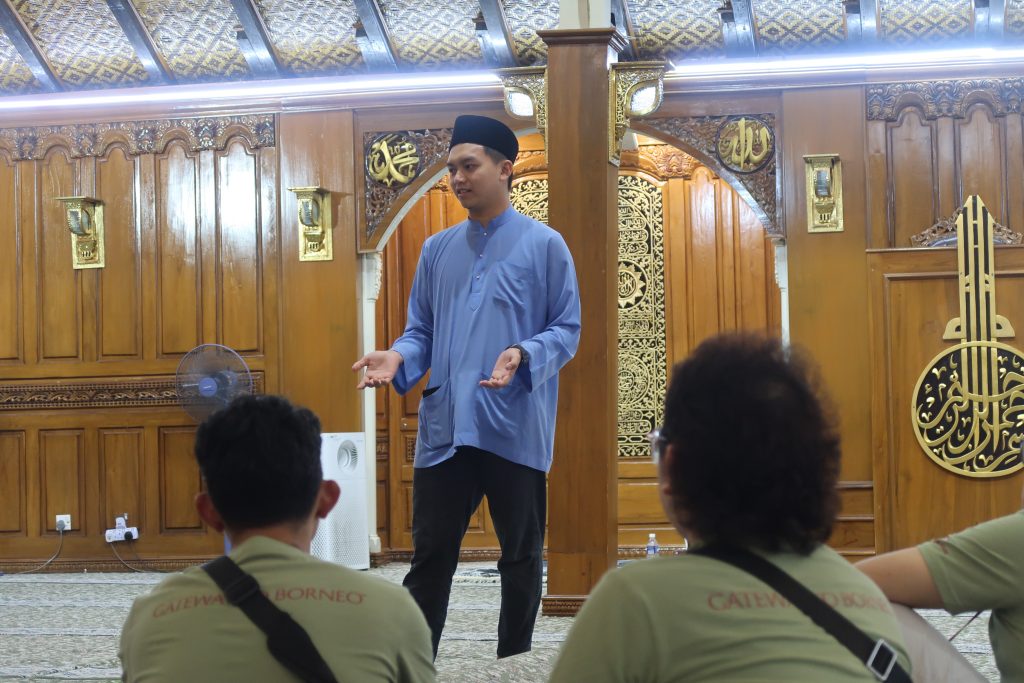
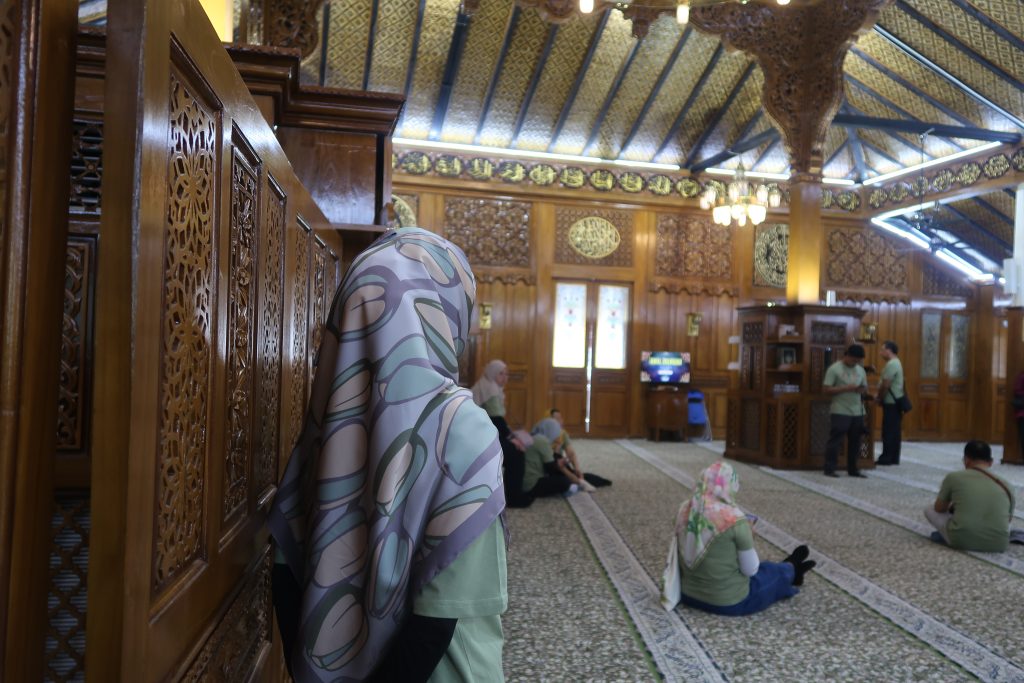
Over the decades, the mosque has undergone several restorations, each carefully preserving its original character while accommodating the needs of a growing congregation.
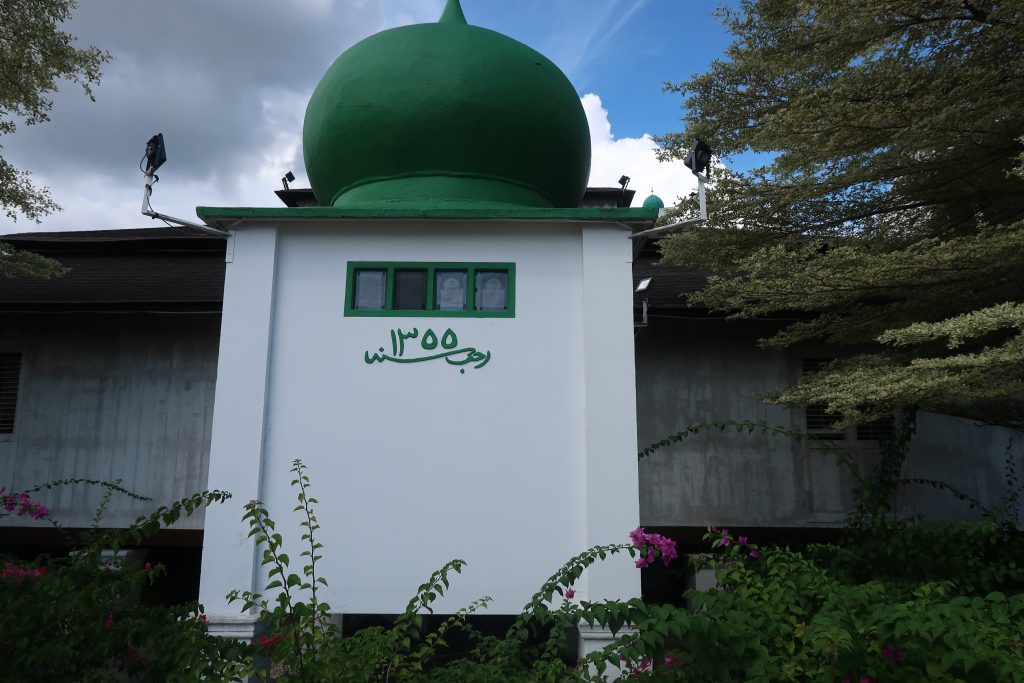
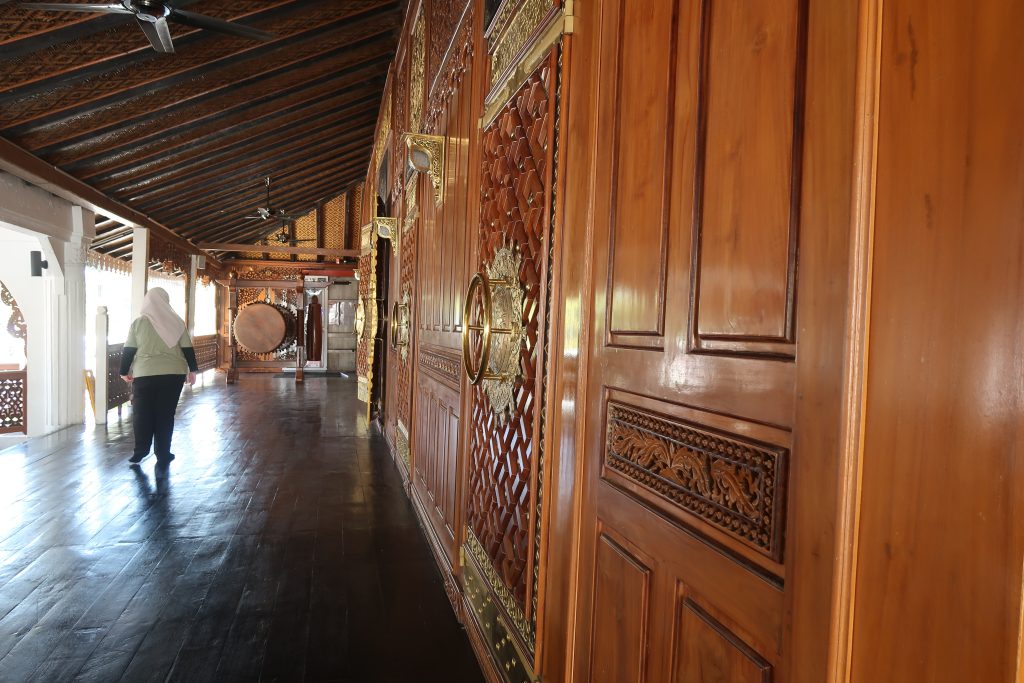
Beyond its religious significance, the mosque stands as a symbol of unity and resilience, welcoming all who seek to understand the town’s spiritual heritage. Its quiet courtyard and intricate wooden carvings invite reflection, a gentle reminder of the enduring traditions that ground this rapidly modernising town.
After spending a day around the new and old neighbourhoods of Sibu, in the evening we had a chance to explore the city in a different light from a boat.
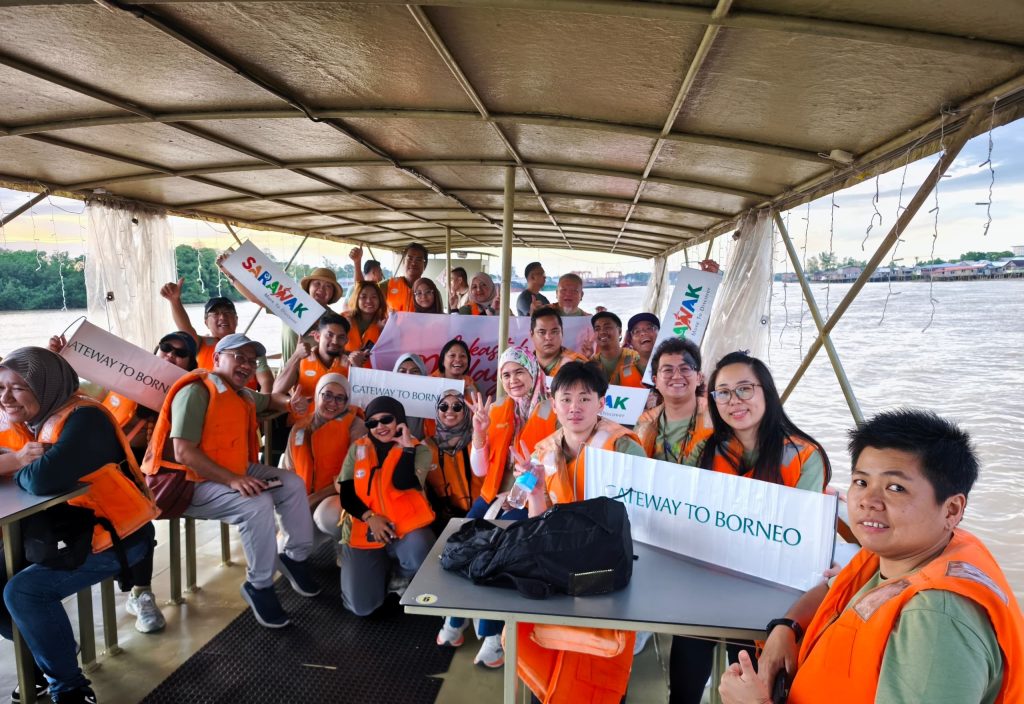
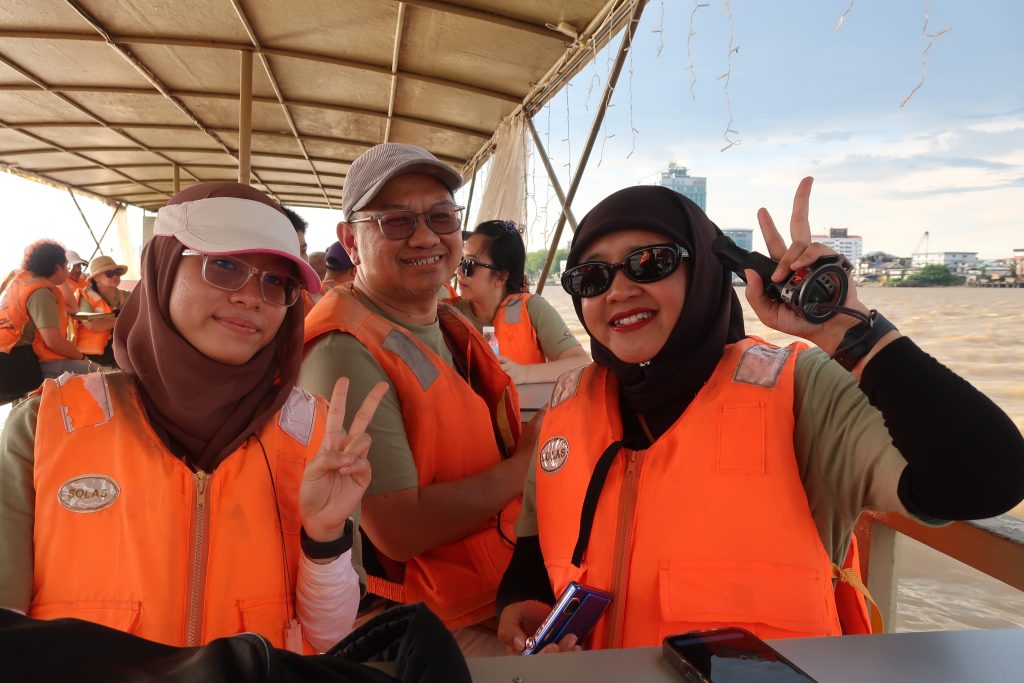
Departing from the Sibu wharf, our team cruised along the majestic Rajang River, soaking in breathtaking sunset views of iconic sights including the bustling waterfront, traditional stilt houses, the century-old Tua Pek Kong Temple and the seven-storey pagoda overlooking the river.
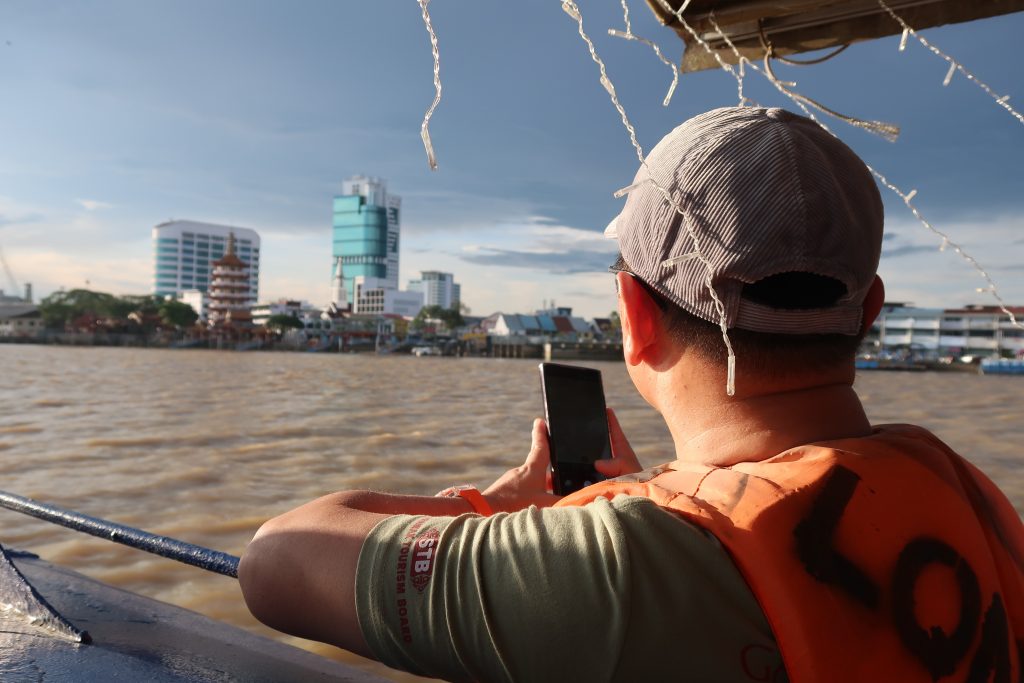
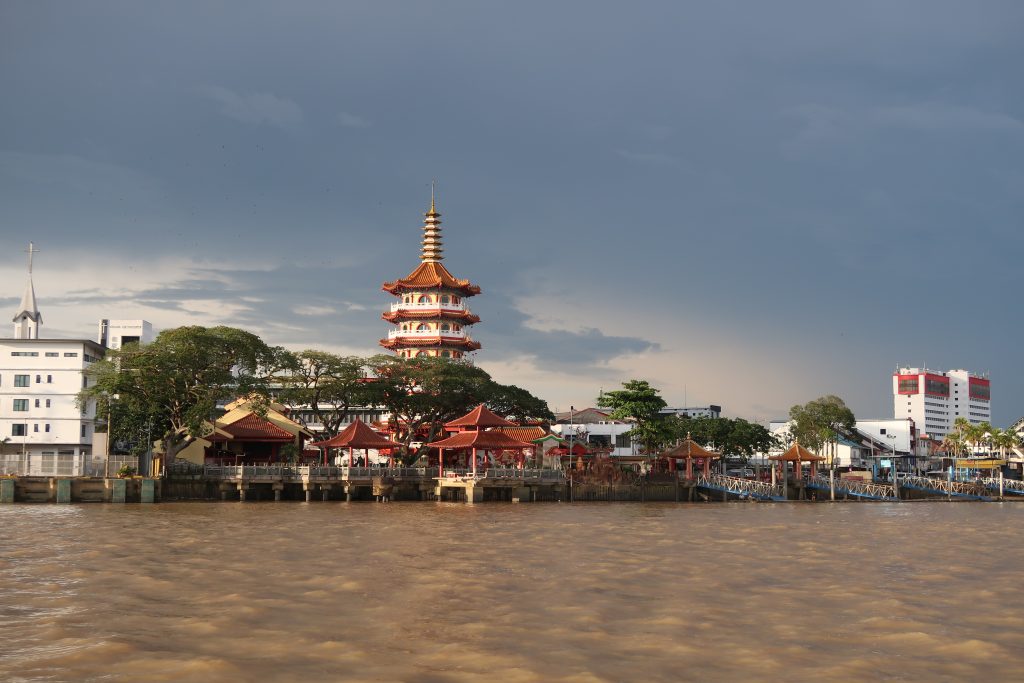
Back on land, we explored the vibrant Sibu Night Market, located in the heart of town. The bustling market is a haven for food lovers and bargain hunters alike.
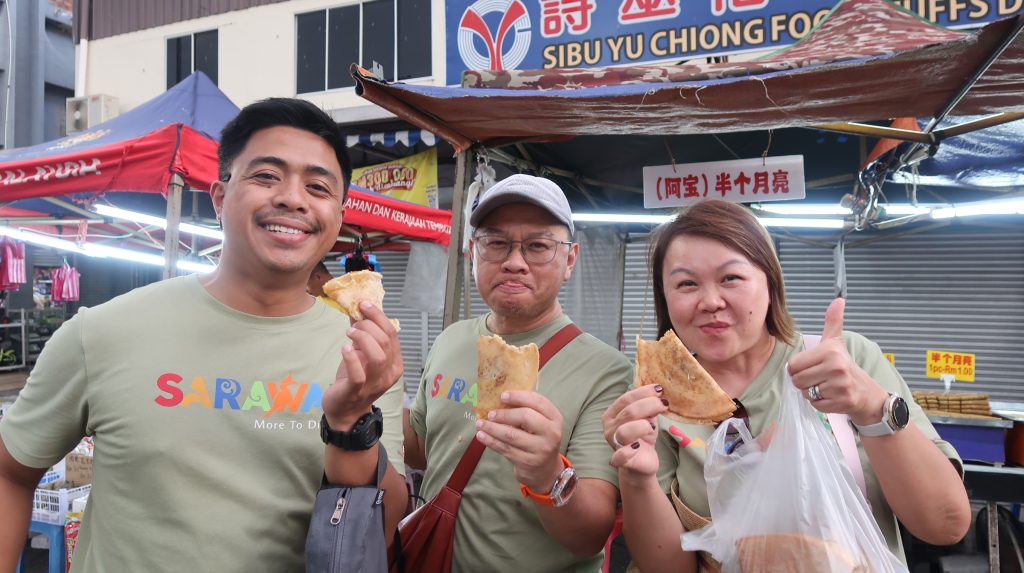
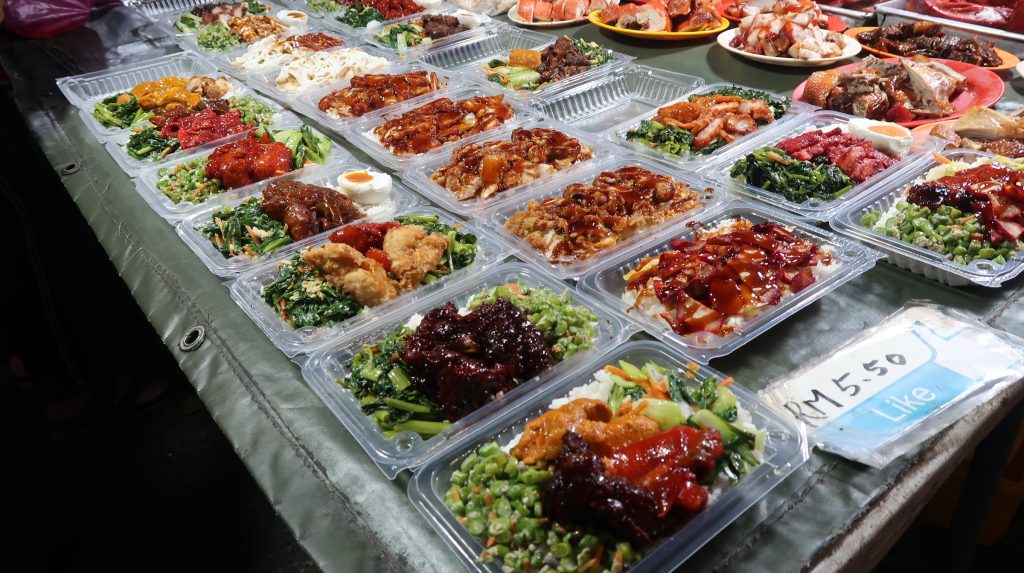
From savoury Foochow-style noodles and grilled satay to the local favourite, the iconic crispy Sibu-style Apam Balik, the market offers a rich tapestry of flavours that reflect the town’s diverse heritage.
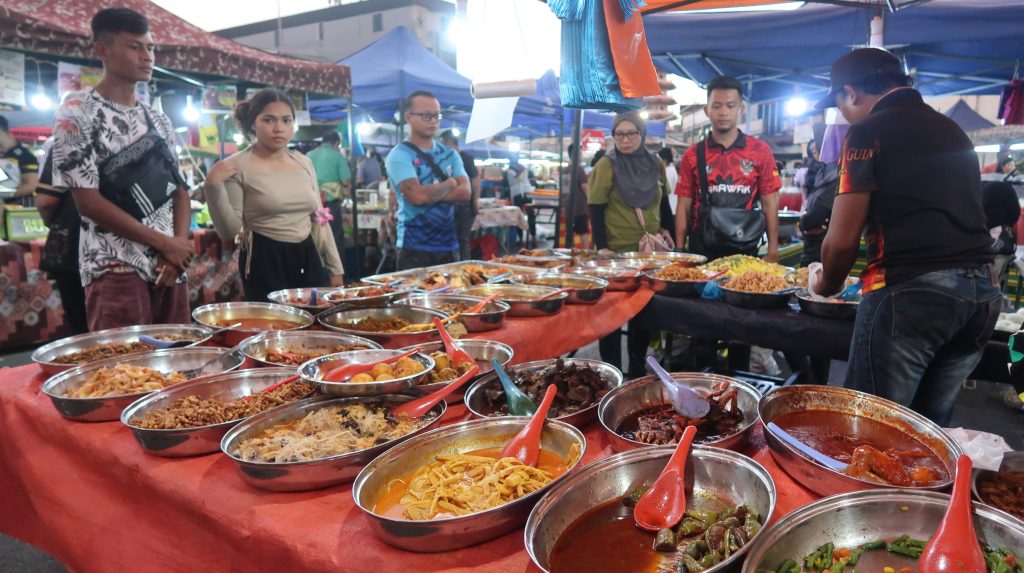
Beyond the delicious food stalls, vendors also sell a wide range of clothing, accessories, and household items, making the night market a lively hub of local life and culture.
Concluding our visit, we explored Sibu Central Market, one of Malaysia’s largest and most diverse indoor markets.
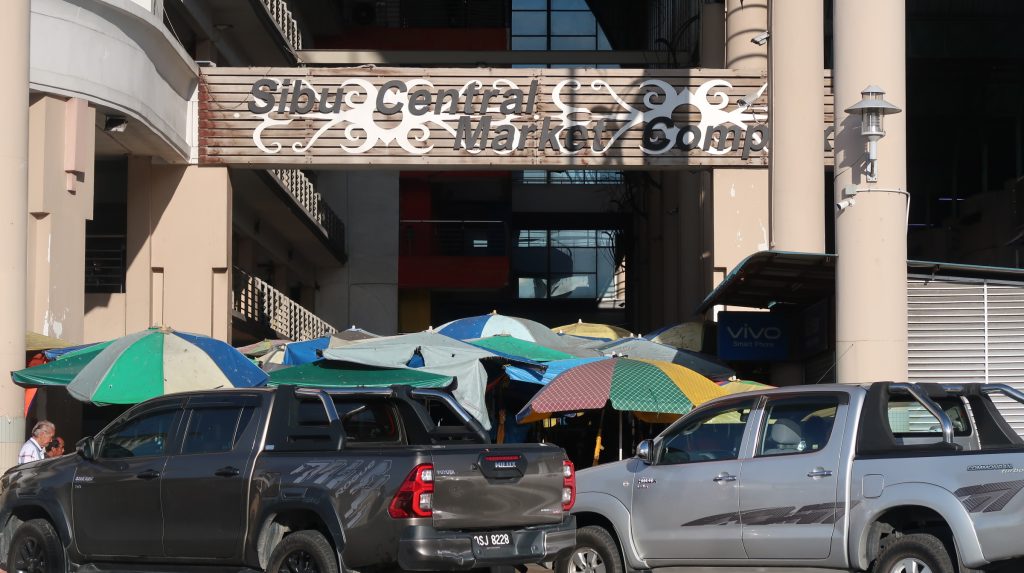
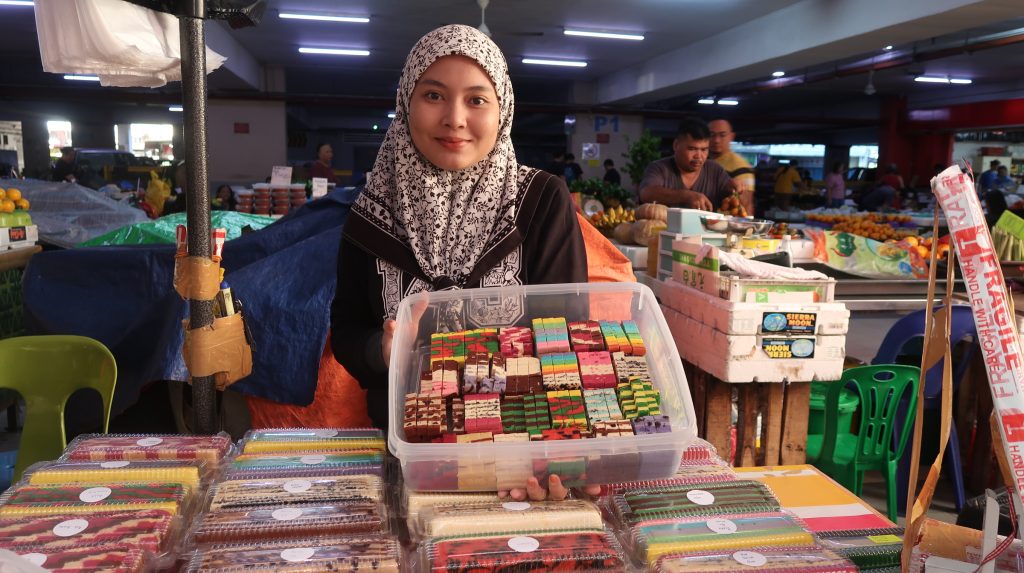
Located on Jalan Channel opposite the Express Boat Passenger Terminal, the market features over 1,000 stalls showcasing the region’s agricultural bounty and cultural richness.
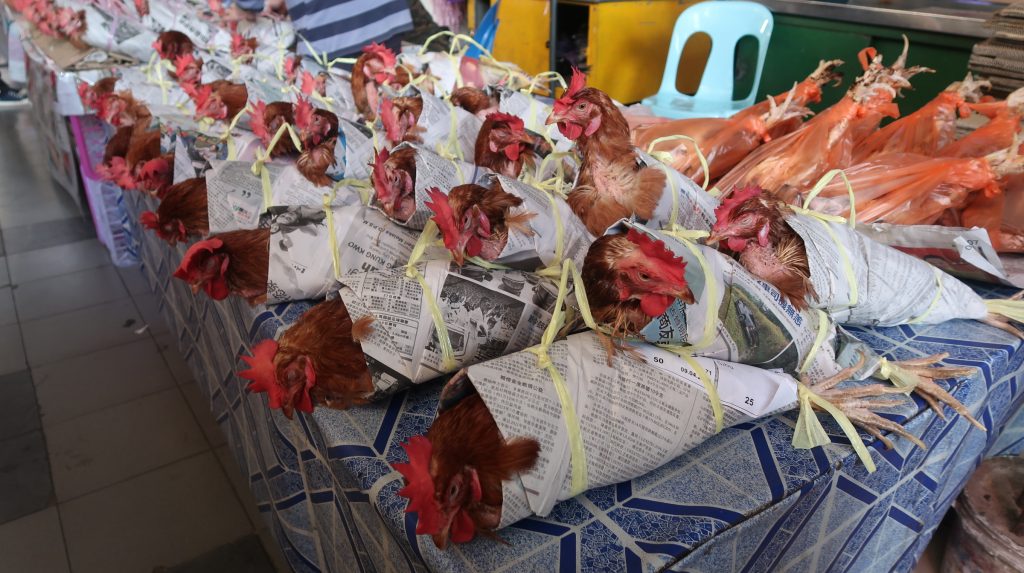
The market offers a wide variety of fresh produce, local delicacies, traditional herbs, and handcrafted goods. Visitors can browse bustling stalls selling everything from fresh seafood and exotic fruits and vegetables to unique handicrafts and souvenirs.
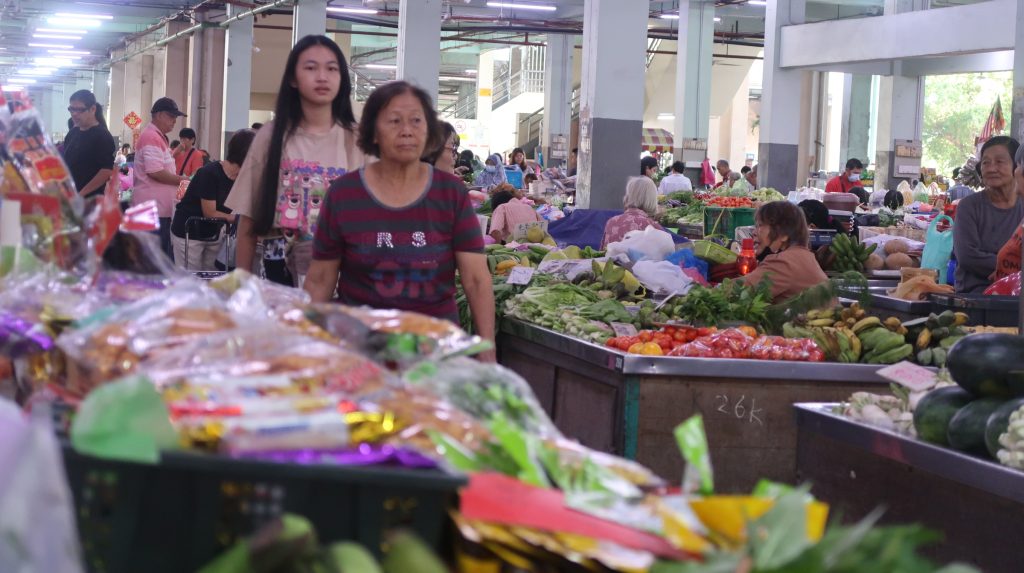
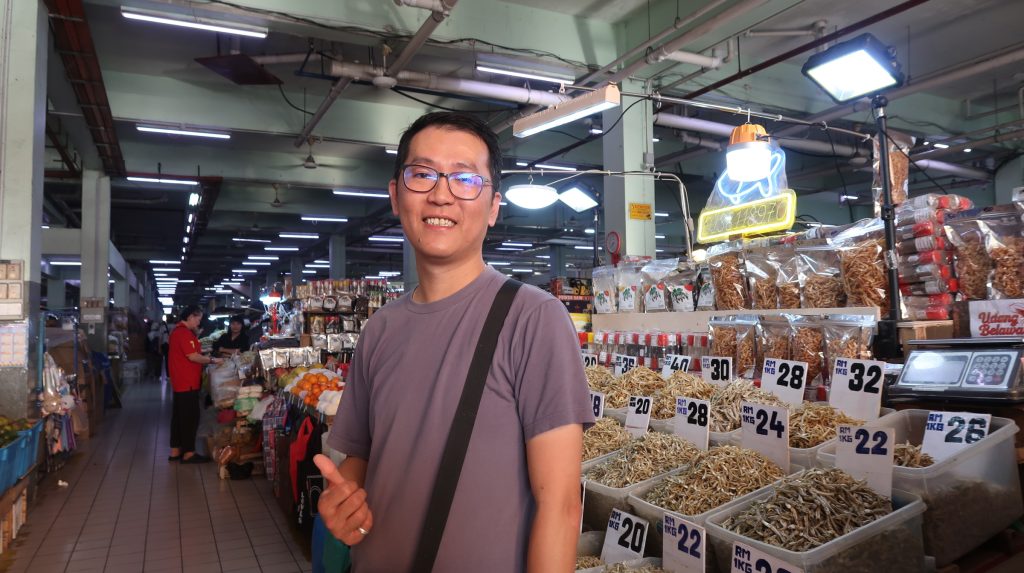
It is also an ideal spot to experience local culture, chat with friendly vendors, and sample authentic Sibu dishes. One unique local tradition is the sale of chickens wrapped in newspaper.
Overall, Sibu offers a unique blend of tradition and modern life. The town’s warm and welcoming spirit, coupled with its deep-rooted customs and stunning landscapes, makes it a must-visit for anyone looking to experience the authentic soul of Sarawak.
THE BRUNEIAN | SARAWAK, MALAYSIA



